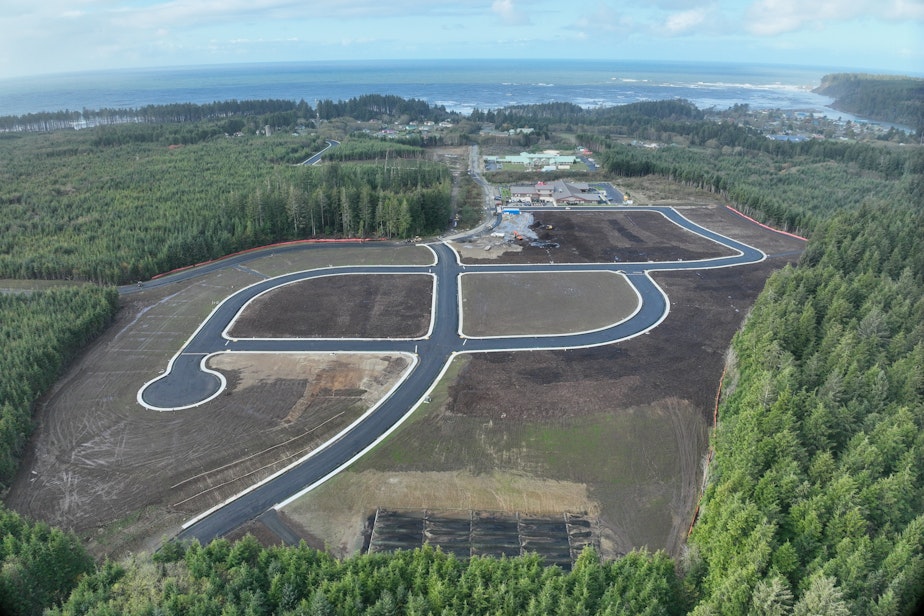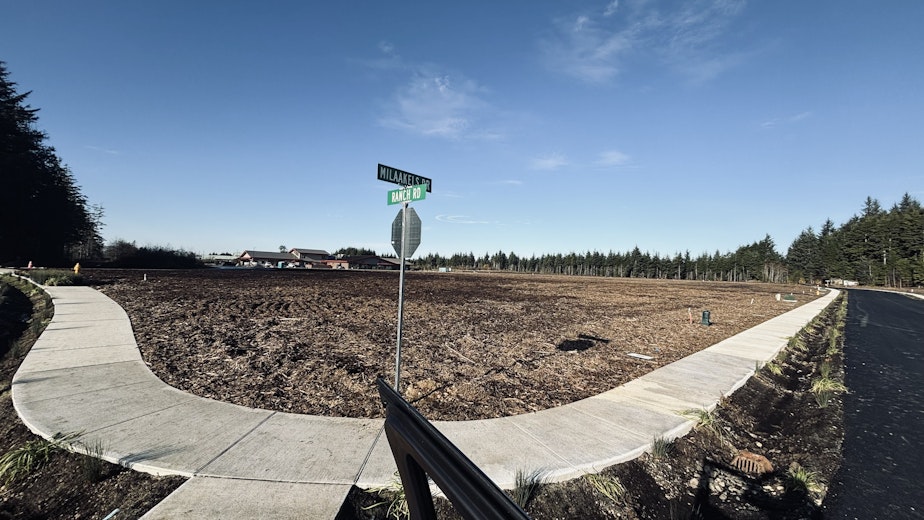Quinault Tribe builds new village site away from rising seas

With winter storms and high tides approaching, the Quinault Indian Nation continues efforts to relocate its seaside villages.
In recent years, the village of Taholah, the largest on the Quinault Indian Reservation on Washington’s Olympic coast, has had to evacuate when waves overtopped the seawall separating it from the Pacific Ocean.
For about a decade, the tribe has been working to move the village of 660 people out of reach of rising seas and tsunamis.
Construction crews installed streets, sidewalks, and underground utilities in the fall of 2023 for a neighborhood of 59 homes about 1 mile inland.
“We went from forest land about three years ago, and now we have a finished product full of street signs and sidewalks and drainages, so it's a really cool sight to see,” said Ryan Hendricks, a Quinault Tribal Council member and former construction manager.
Hendricks lives in the lower portion of Taholah Village, where homes and businesses sit about 6 feet above the average daily high tide. An expanding ocean, fueled by global warming, is gradually pushing sea levels higher, while king tides that come every November, December, and January can quickly push seas much higher for short stretches. So can winter storms.
Sponsored
Satellite images show the top of the seawall that protects Taholah from the surf is now littered with logs tossed there by the ocean.
“A lot of these logs are getting shoved over the seawall by the waves and the high tides, and they're landing in tribal members backyards,” Hendricks said. “And it's a little bit scary.”
In January 2022, much of the lower village had to evacuate from flooding during a stormy high tide. The tribe put elders up at the Quinault Beach Resort and Casino in Ocean Shores, about 20 miles south of Taholah.
Taholah is gradually becoming one of the first communities in the country to retreat as a warming climate raises sea levels. But it’s a slow process.
A community building for daycare and senior programs opened in 2022 at the upland site.
Sponsored
Hendricks said the tribe is seeking more federal grants to be able to start building homes.
In 2022, the Biden Administration provided $25 million each to the Quinault Nation and the Alaskan villages of Newtok and Napakiak to help relocate three tribal villages away from rising seas.
The Quinault Nation was turned down for three federal grants in 2023 and is applying for two more grants this year.
Hendricks said he hopes the first Quinault elders can move to the upland Taholah village within the next two years.

Sponsored
The Quinault Nation is also planning to relocate its smaller village of Queets, though that work is mostly in the planning stages.
To the north, the Quileute Tribe relocated its tribal school out of the tsunami zone in 2022 and has plans to move other critical facilities in the surfside town of La Push to higher ground. Quileute representatives did not respond to requests for more information on those plans.
“There are lots of examples of places that no longer exist on the map, so this has happened before,” said Washington Sea Grant oceanographer Ian Miller. “There are not too many instances of it happening in this kind of planned, managed, coordinated way.”
Few communities have confronted sea-level rise as head-on as Taholah has. That might change soon.
In July, the Washington State Legislature required counties and cities of at least 6,000 residents to incorporate climate change impacts in their comprehensive plans. The cities must address climate-amplified hazards such as flooding, fire, and droughts as well as the need to reduce planet-heating emissions.
Sponsored
Local governments’ shoreline regulations are now required to address “the impact of sea level rise and increased storm severity.”




